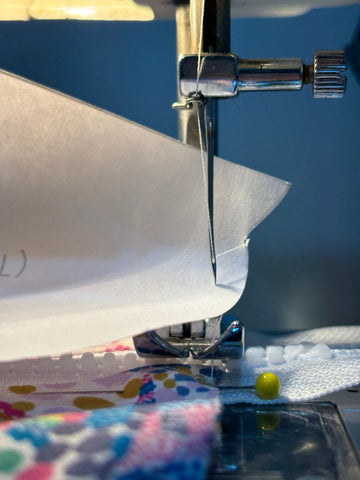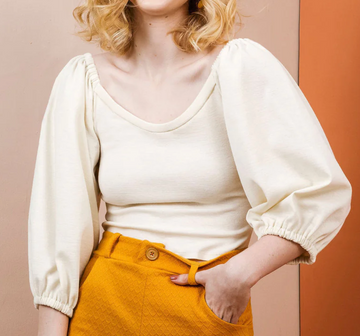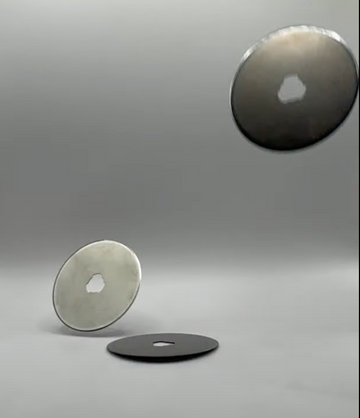Whether you're quilting a patchwork masterpiece or sewing a summer sundress, the right presser foot can make all the difference. These tiny tools do some heavy lifting; helping your fabric feed evenly, your stitches stay tidy, and your projects turn out polished and professional.
Let’s break down the five most commonly-used presser feet, what they do, and who they're best for (quilters, apparel sewists, or both).
1. All-Purpose/Standard Presser Foot
🧵 Best for: Everyone
👗 Apparel Sewers: Yes
🧶 Quilters: Yes, especially piecing
This is your sewing machine’s default foot—the one you use when you’re not using something else. It handles straight stitches, zigzags, and most basic sewing tasks.
Use it for:
-
Straight stitch seams
-
Zigzag hems
-
Attaching labels or tags
-
Piecing quilt blocks (although some quilters prefer a ¼” foot)
Quilter tip: For basic patchwork piecing, many quilters switch this out for a ¼” foot (more on that below), but the all-purpose foot works in a pinch.
2. Zipper Foot
🧵 Best for: Apparel Sewists
👗 Apparel Sewers: Yes
🧶 Quilters: Occasionally
This narrow foot lets you sew close to the zipper teeth without running into them, which is essential for inserting zippers cleanly. Most zipper feet can be adjusted to the left or right side of the needle.
Use it for:
-
Centered or lapped zipper installation
-
Piping (yes, really!)
-
Sewing next to bulky seams or trims
Apparel tip: Don’t try to insert a zipper without this foot. You’ll cry. Ask me how I know.
3. Walking Foot (Even Feed Foot)
🧵 Best for: Quilters
👗 Apparel Sewers: Occasionally (knits, plaids, slippery fabrics)
🧶 Quilters: Yes
The walking foot has feed dogs on top that move the top layer of fabric while the machine’s feed dogs move the bottom layer. It’s like four-wheel drive for your sewing machine.
Use it for:
-
Quilting layers (no puckering!)
-
Matching plaids/stripes in garments
-
Sewing tricky fabrics like knits, vinyl, or minky
-
Long seams that need precise alignment
Quilter tip: If you’re straight-line quilting a sandwich (top, batting, and back), this foot is your best friend.
4. 1/4" Quilting Foot
🧵 Best for: Quilters
👗 Apparel Sewers: Not necessary
🧶 Quilters: Absolutely
Also called a "patchwork foot," this one is designed for piecing quilt blocks with a perfect ¼” seam allowance. It often has a little edge guide to help you stay accurate.
Use it for:
-
Piecing quilt tops
-
Narrow seams that must be consistent
-
Sewing miniature quilt blocks
Quilter tip: Even a tiny 1/16" variation in seam allowance can add up fast over multiple quilt blocks. This foot helps you stay exact.
5. Buttonhole Foot
🧵 Best for: Apparel Sewers
👗 Apparel Sewers: Yes
🧶 Quilters: Rarely
If your machine has an automatic or manual buttonhole function, this foot is essential. It holds your button in place (on auto models) to size the hole perfectly, and it stabilizes the fabric for even stitching.
Use it for:
-
Shirts, dresses, jackets
-
Decorative buttonholes (even faux ones!)
-
Projects that need ties or loops
Apparel tip: Pair this with a seam ripper for clean buttonhole openings, and always test on a scrap first.
Bonus: Honorable Mentions
-
Overcasting Foot: For mimicking serger edges on garment seams
-
Free-Motion/Darning Foot: For quilters doing FMQ
-
Teflon Foot: For vinyl and sticky fabrics
-
Rolled Hem Foot: For narrow hems on lightweight garments
Final Thoughts
Don’t feel like you need a hundred presser feet to get started. But as your skills grow, your toolbox probably will too. Whether you're quilting or garment sewing, the right foot makes your stitches smoother, your seams cleaner, and your sewing more joyful.
If you're not sure which presser feet are compatible with your machine, check your manual or your brand's accessory guide (and yes, we all lose our manuals; thank goodness for PDFs!).
Need a new rotary blade to go with that ¼” foot?
👉 Check out our Precision Rotary Blades – delivered right to your door, on your schedule.
Happy sewing!
-E






